What's New
Displaying results 1831 - 1840 of 4052
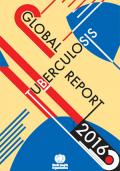
Resource | Publications,
The Sustainable Development Goals (SDGs) for 2030 were adopted by the United Nations in 2015. One of the targets is to end the global TB epidemic. The WHO End TB Strategy, approved by the World Health Assembly in 2014, calls for a 90% reduction in TB deaths and an 80% reduction in the TB incidence rate by 2030, compared with 2015.
This global TB report is the first to be produced in the era of the SDGs and the End TB Strategy. It provides an assessment of the TB epidemic and progress in TB diagnosis, treatment and prevention efforts, as well as an overview of TB-specific financing and research. It also discusses the broader agenda of universal health coverage, social protection and other SDGs that have an impact on health. Data were available for 202 countries and territories that account for over 99% of the world’s population and TB cases.
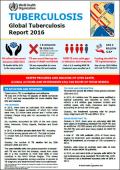
Resource | Fact Sheets,
About one-third of the world's population has latent TB, which means people have been infected by TB bacteria but are not (yet) ill with the disease and cannot transmit the disease.
People infected with TB bacteria have a 10% lifetime risk of falling ill with TB. However, persons with compromised immune systems, such as people living with HIV, malnutrition or diabetes, or people who use tobacco, have a much higher risk of falling ill.
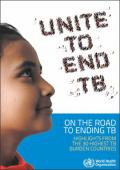
Resource | Publications,
2016 marks the beginning of the Sustainable Development Goals (SDGs) era. Ending the global tuberculosis (TB) epidemic is the goal of the World Health Organization’s End TB Strategy, and it is a SDG target for 2030.
Ending TB is a development challenge and opportunity. It is about tackling poverty and inequity. Ministries of Health cannot do it alone. Ending TB and achieving the SDGs requires intensified action across government ministries, communities, the private sector and civil society. It will take health and socioeconomic interventions, along with research and innovation. Progress across the SDGs will be essential.
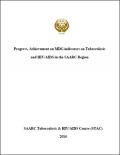
Resource | Publications,
At the turn of the century, world leaders came together at the United Nations and agreed on a bold vision for the future through the Millennium Declaration. The Millennium Development Goals (MDGs) were a pledge to uphold the principles of human dignity, equality and equity, and free the world from extreme poverty. The MDGs with eight goals and a set of measurable time bound targets, established a blue print for tackling the most pressing development challenges of our time.
This report presents analysis of the status of progress on MDGs until 2013/2014. Remarkable gains have also been made in the fight against Tuberculosis and HIV/AIDS. SAARC region has achieved MDG in all three indicators of Tuberculosis, of which some of the countries were in off track and some of in the line of on track.
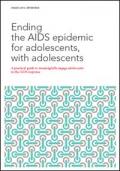
Resource | Publications,
AIDS is now the leading cause of death among adolescents (aged 10–19 years) in Africa, and it is the second most common cause of death among adolescents globally. The 2030 Agenda for Sustainable Development includes a specific goal to ensure healthy lives and promote well-being for all at all ages. Within this goal it includes a specific target (3.3), which aims at ending the AIDS epidemic by 2030.
The purpose of this document is to provide guidance to programme designers, implementers, policy and decision makers on how to meaningfully engage adolescents in the AIDS response and broader health programming, and to demonstrate why adolescents and youth are critical in efforts to end the AIDS epidemic by 2030. It also highlights what steps should be taken to implement programmes and policies that improve adolescent health outcomes (including for HIV) at the national, regional and global levels.
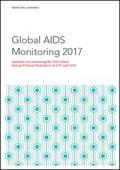
Resource | Publications,
The purpose of this document is to provide guidance to national AIDS programmes and partners on the use of indicators to measure and report on the country response.
The 2016 United Nations Political Declaration on HIV and AIDS: On the Fast-Track to Accelerate the Fight against HIV and to End the AIDS Epidemic by 2030,1 adopted at the United Nations General Assembly High-Level Meeting on AIDS in June 2016, mandated UNAIDS to support countries in reporting on the commitments in the Political Declaration. This Political Declaration was built on three previous political declarations: the 2001 Declaration of Commitment on HIV/AIDS, the 2006 Political Declaration on HIV/AIDS and the 2011 Political Declaration on HIV and AIDS.
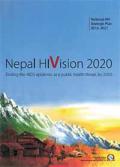
Resource | Publications,
The National HIV Strategic Plan for the period 2016-2021 is a set of evidence-informed strategies focused on building one consolidated, unified, rights-based and decentralized HIV programme with services that are integrated in the general health services of the country. It builds on lessons learned from implementation of the National AIDS Strategy 2011-2016, its mid-term review and the Nepal HIV Investment Plan 2014-2016, and it applies recommendations from the AIDS Epidemic Model exercise and other strategic information from studies, surveys and assessments.
The National HIV Strategic Plan has been prepared through a wide range of consultations, including the Nepali Government, civil society networks, international partners and service providers, under the leadership of the National Centre for AIDS and STI Control.
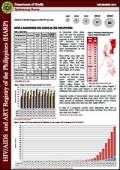
Resource | Fact Sheets,
In December 2016, there were 750 new HIV antibody zero-positive individuals reported to the HIV/AIDS & ART Registry of the Philippines (HARP). Ninety percent of those were asymptomatic at the time of reporting.
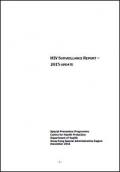
Resource | Publications,
The increasing trend of annual number of newly reported HIV infection continued in 2015 and reached a record high of 725 cases. Sexual transmission remained the major route of HIV transmission in Hong Kong thus far, while the transmission from other routes including drug injection has been kept at a relatively low level. Overall, Hong Kong is still having a low prevalence level of HIV infection in the general population.
This annual surveillance report is an initiative of Special Preventive Programme, Centre for Health Protection, Department of Health. The report aims to provide strategic information to facilitate planning of services and intervention activities for the prevention, care and control of HIV/AIDS. Following a commentary, data collected from five main components of our surveillance programme (the HIV/AIDS voluntary reporting system, HIV prevalence surveys, sexually transmitted infections caseload statistics, behavioural studies and HIV-1 genotyping studies) were presented as tables and graphs. Findings of the HIV and AIDS Response Indicator Survey (HARiS) and other studies were also included.
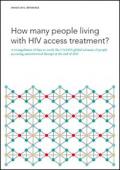
Resource | Publications,
Among the most closely watched indicators of the global AIDS response is the number of people on antiretroviral therapy. Antiretroviral medicines allow people living with HIV to live long and healthy lives. The medicines can also reduce the amount of HIV in the bloodstream to undetectable levels. Having such a low viral load greatly reduces the chance that a person living with HIV will transmit the virus to someone else.
The current global target, agreed by the United Nations General Assembly in June 2016, is for 30 million people living with HIV to access treatment by 2020. UNAIDS is mandated by the United Nations General Assembly to track global progress against this and other global targets. A majority of countries regularly report treatment numbers and other data against a standard set of indicators to UNAIDS through the Global AIDS Response Progress Reporting (GARPR) system. UNAIDS works in collaboration with the World Health Organization (WHO), the United Nations Children’s Fund (UNICEF) and other partners to validate these reports ahead of publication. For the minority of countries that do not provide reports, UNAIDS estimates their treatment numbers using a variety of data sources.





